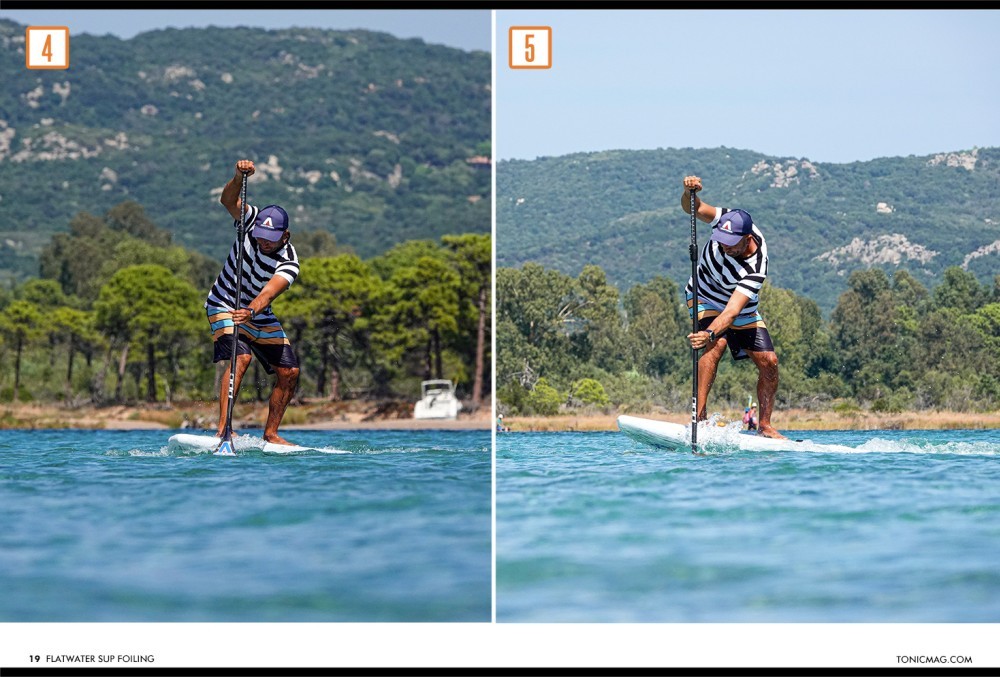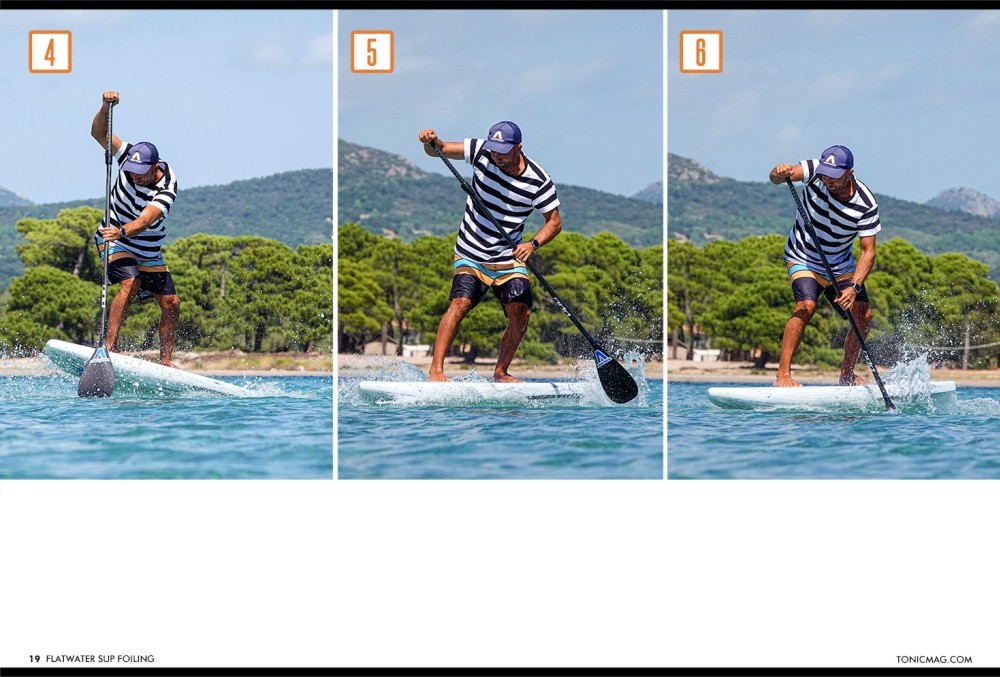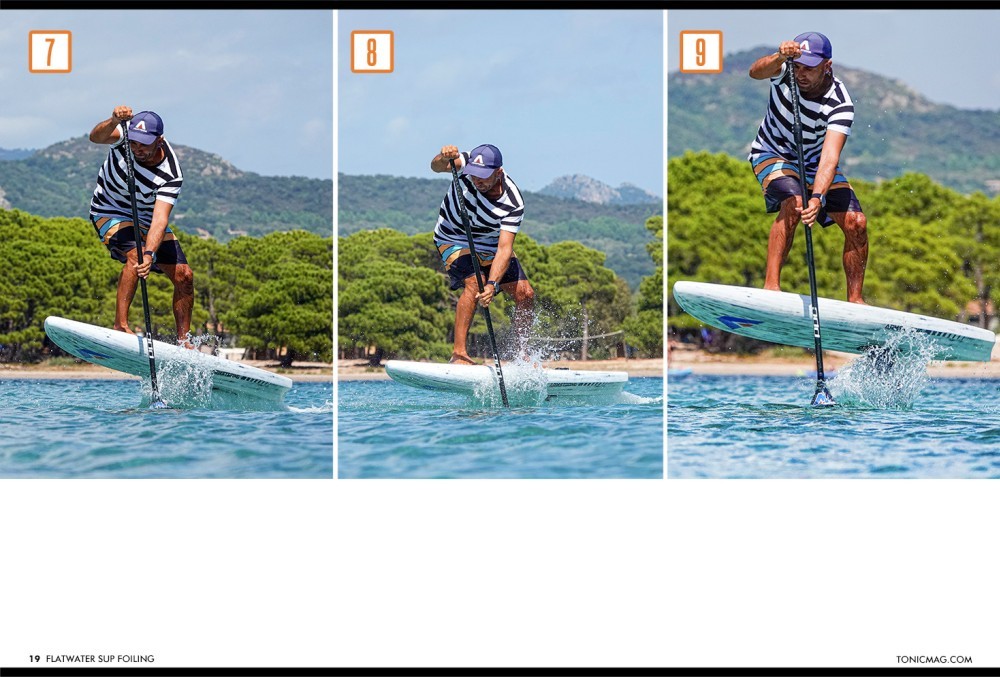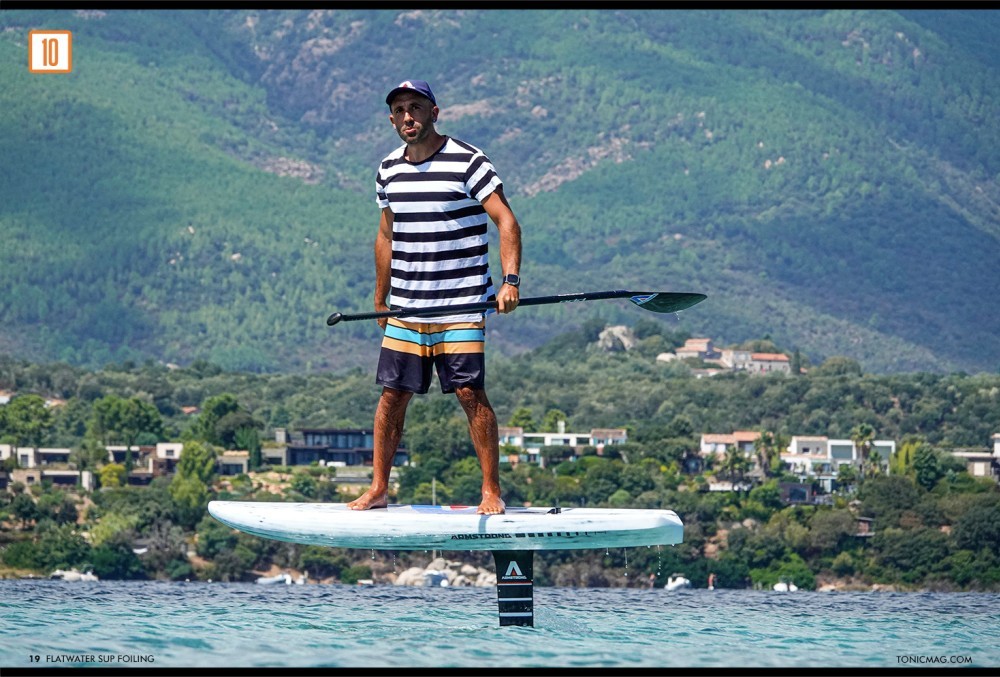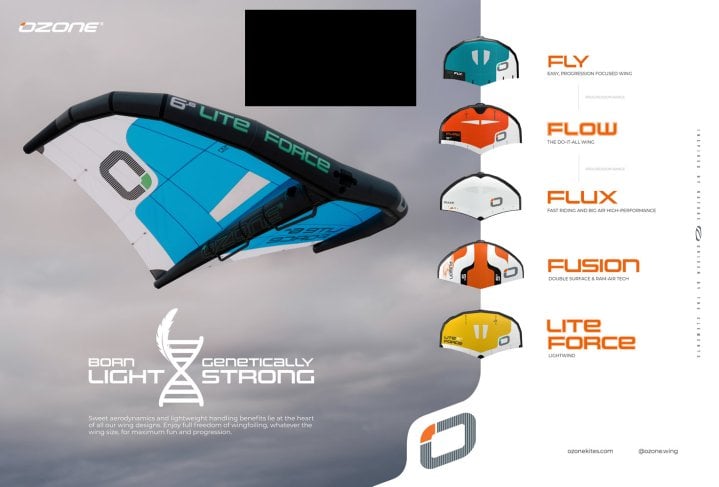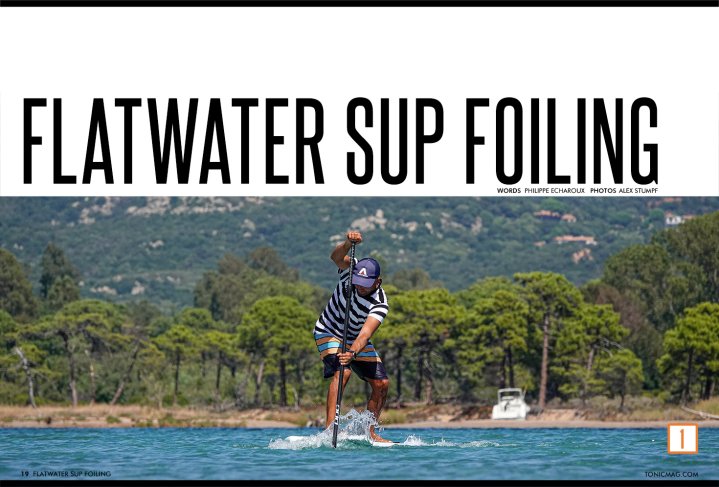
Flat Water SUP Starts
Issue 19 / Mon 26th Feb, 2024
Mastering flatwater SUP starts on a foil board, which can be challenging and requires dedication and unwavering determination. However, the rewards of becoming proficient in this skill are well worth the effort! In this tutorial, Philippe Echaroux, an internationally renowned artist and experienced foiler, will provide guidance and insights to help you master flatwater starts on a SUP foil.
Gear
To begin, it is recommended that you use a modern narrow SUP foil board, such as the Armstrong Downwind board line. Opt for a board with a volume around 30L greater than your body weight in kilograms. This will provide stability and help generate the necessary speed. Additionally, a rigid carbon paddle with a larger-than-usual blade can be beneficial. A paddle that is 10-15cm taller than your height is recommended, although Phil personally prefers using one that is 18cm taller for better paddling efficiency.
Tutorial
In the accompanying photos, Phil uses an 85L Armstrong Downwind Board, an 865 Performance Mast, a 60cm Fuselage, an APF 1675 Front Foil, and the Pump 202 Stabilizer. He also uses a PPC Paddle.
Photos 1 and 2
The initial step is to build up some speed without considering the foil. Before the first photo, Phil takes a few gentle strokes to ensure that his board is heading in the right direction and lying flat on the water. These initial strokes provide some speed and stability, allowing him to establish his stance. Phil's preferred stance involves placing his back foot roughly over the leading edge of the mast and his front foot just ahead of the front wing of the foil. This stance provides comfort and places slightly more weight on the front foot. From now on, maintaining focus and efficiency is crucial, as there is no room for wasted energy.
To gain speed, the key is to paddle as far forward as possible, towards the front foot. It's important to remember that every paddle stroke behind your hips is entirely ineffective. Always paddle from as far forward as possible towards your front foot or hips. Start with powerful strokes without worrying about the cadence, and focus on generating board speed.
Photo 3
Continuing with powerful and forward strokes, you'll notice that the board starts to plane, and the nose lifts slightly above the water's surface. You're on the right track!
Photo 4
In this phase, you continue paddling forward and deep while bending your knees as you reach forward. This automatically initiates the foil's pumping action. Focus on maintaining front foot pressure and ensure your knees are bent while paddling forward. Be patient and just continue a little more; you’re nearly there!
Photos 5-6
At this point, as you become unweighted, your board should start to lift from the water. The most significant mistake is trying to get on the foil too quickly. Keep paddling forward. You can transition from powerful strokes to a higher cadence. The goal was to apply power to gain speed during these initial steps. Here, we aim to achieve the best coordination between your paddle strokes and pumping, so a high cadence stroke is key. If the board's nose hits the water at this stage, don't worry; just continue with the same technique. In fact, the rebound of the nose will assist in lifting the back of the board, too.
Photos 7-8
Now it's time to shift your focus from paddle strokes to pure pumping technique. If you're already a god at pumping, you can encourage the board to lift a lot earlier, even when it's still in the water. However, we aim to help everyone, so this is the transition stage where your legs provide the energy. Your arms still help, but it’s shifting.
Photo 9
Continue paddling slightly - even when you're on the foil - this helps maintain speed and stability. Regarding pumping while on the foil, start with pressure on your back foot and then transition it to the front foot. Keep your hips slightly forward and, especially if using larger foils during the learning process, position your weight above your front foot to assist in control. While paddling forward, your front foot moved a little forward on the board. If it did, just take it back a bit; the best pumping position is not to get the legs too spread; you’ll be more efficient if you have a naturally narrower stance to pump the foil.
Photo 10
Success unlocked! You're now the coolest person on the water, and all those early struggles are in the past. Look ahead; you've unlocked a new world of foiling anytime, anywhere!
By Philippe Echaroux




